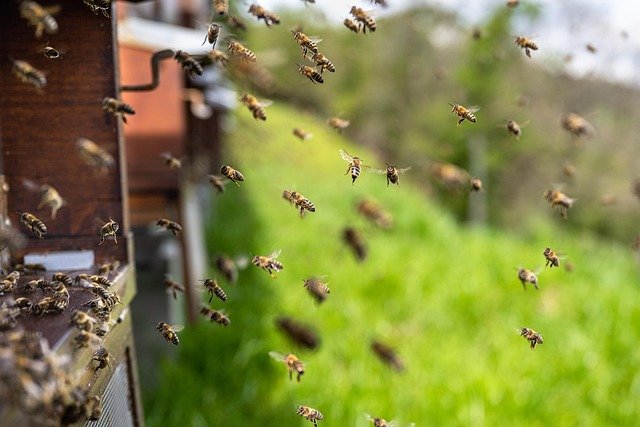Unraveling the Enigma of Bee Democracy
Honeybees, those tiny yet mighty creatures, have long fascinated humans with their complex social structures and intricate behaviors. But perhaps one of the most astounding aspects of their society is the democratic process they employ when making crucial decisions. This phenomenon, known as bee democracy, offers a fascinating glimpse into the collective intelligence of these remarkable insects and presents valuable lessons for human decision-making processes.

The Buzz About Bee Democracy
At the heart of bee democracy lies the process of swarm decision-making. When a colony outgrows its current hive, a portion of the bees, along with the queen, departs to establish a new home. This critical juncture is where the democratic process truly shines. Scout bees fan out across the surrounding area, searching for potential nest sites that meet specific criteria such as size, protection from the elements, and proximity to food sources.
Upon discovering a promising location, a scout returns to the swarm and performs an intricate waggle dance. This dance communicates the direction, distance, and quality of the potential site to other bees. The more enthusiastic the dance, the better the site. Other scouts then visit the location, assess its suitability, and if impressed, return to perform their own dances, recruiting more bees to evaluate the site.
The Art of Consensus Building
As multiple sites are discovered and advertised, a fascinating phenomenon occurs. The swarm engages in a form of deliberation, with different factions advocating for their preferred locations. Over time, support for less favorable sites wanes, while enthusiasm for the best options grows. This process continues until a clear consensus emerges, typically favoring the site that has garnered the most support from scout bees.
What’s particularly remarkable about this process is its efficiency and accuracy. Studies have shown that bee swarms make the optimal choice in over 90% of cases, often selecting the best available site from numerous options. This level of decision-making prowess is all the more impressive considering it’s achieved without central leadership or complex communication beyond the waggle dance.
Lessons from the Hive
The implications of bee democracy extend far beyond the realm of entomology. Researchers and organizational experts have begun to draw parallels between honeybee decision-making and human group dynamics. The bees’ ability to reach consensus without hierarchical structure offers valuable insights into effective collaborative problem-solving and decision-making in human organizations.
One key lesson is the importance of diverse perspectives. In a bee swarm, multiple scouts explore different options, each bringing back unique information. This diversity of input helps ensure that the final decision is based on a comprehensive assessment of available options, rather than being swayed by a single influential voice.
From Hives to Boardrooms
The principles of bee democracy have inspired new approaches to human decision-making in various fields. Some companies have adopted decentralized decision-making models that mirror the bee swarm’s approach, encouraging employees at all levels to contribute ideas and participate in the evaluation process. This method has been credited with fostering innovation, improving employee engagement, and leading to more robust decisions.
In the political realm, concepts derived from bee democracy have influenced discussions on participatory democracy and collective intelligence. The idea that large groups can make wise decisions when given the right framework and information-sharing mechanisms has sparked interest in new forms of civic engagement and policy-making.
The Future of Swarm Intelligence
As our understanding of bee democracy deepens, researchers are exploring ways to apply these insights to artificial intelligence and swarm robotics. The concept of swarm intelligence, inspired in part by bee behavior, is being used to develop algorithms for everything from optimizing traffic flow to predicting financial markets.
One particularly promising area is the development of autonomous drone swarms for search and rescue operations. By mimicking the decentralized decision-making of bee swarms, these drone networks can potentially cover large areas more efficiently and adapt to changing conditions without centralized control.
Challenges and Controversies
Despite the enthusiasm surrounding bee democracy, some researchers caution against oversimplifying or romanticizing the process. Critics argue that while the parallels between bee and human decision-making are intriguing, fundamental differences in complexity and context limit direct applications.
Additionally, concerns have been raised about the potential misuse of swarm intelligence concepts in areas such as social media manipulation or crowd control. As with any powerful tool, the principles derived from bee democracy must be applied ethically and with careful consideration of their broader implications.
Preserving Nature’s Democratic Teachers
As we continue to learn from and be inspired by bee democracy, it’s crucial to remember the precarious state of bee populations worldwide. Habitat loss, pesticide use, and climate change threaten these remarkable insects and the vital ecosystem services they provide. Efforts to protect and restore bee habitats are not just essential for ecological reasons but also to preserve this living laboratory of collective decision-making.
The study of bee democracy offers a unique window into the power of collective intelligence and the potential for decentralized decision-making. As we face increasingly complex global challenges, the humble honeybee may hold valuable lessons in cooperation, consensus-building, and adaptive problem-solving. By understanding and respecting these tiny democrats, we may just find new ways to improve our own societies and decision-making processes.





